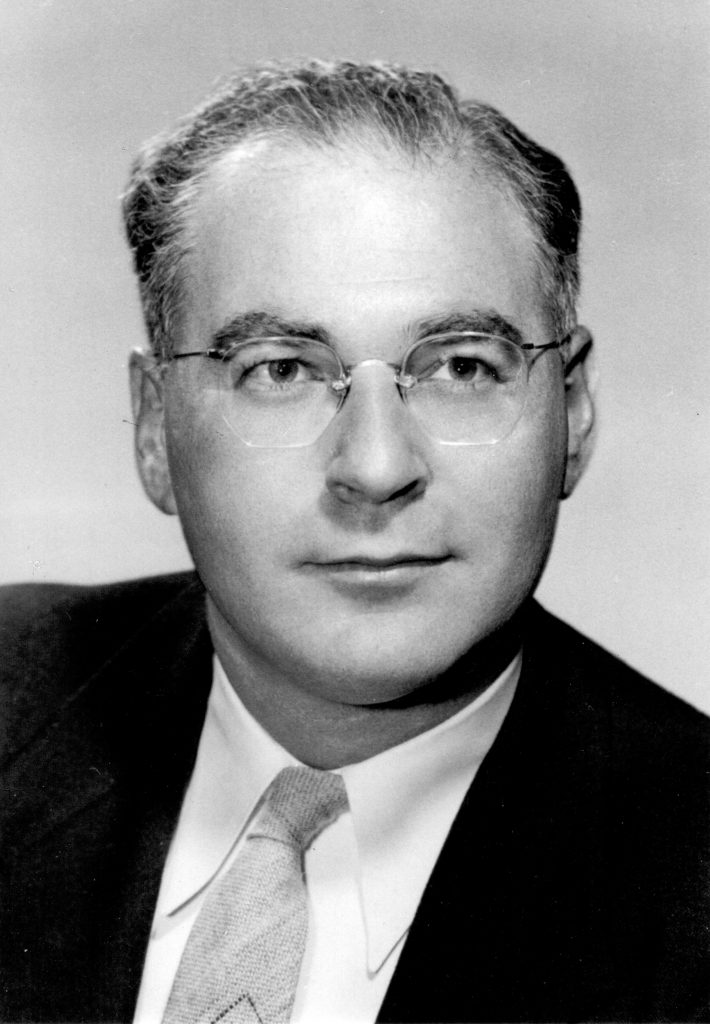Leon Leventhal was a nuclear chemist and radiation expert who worked at Oak Ridge, the University of Chicago’s Met Lab, and Los Alamos Laboratory during the Manhattan Project.
Early Years
In 1942, after earning his Bachelor of Science degree in Radio Chemistry at UC Berkeley, Mr. Leventhal briefly worked for Richfield Oil Company.
Mr. Leventhal joined the army in 1943. After successfully completing a series of aptitude tests, he was sent to Virginia Polytechnic Institute, where he received a second B.S. in Chemical Engineering in January of 1944.
Manhattan Project
In 1944 Mr. Leventhal was sent to Oak Ridge to work as a chemical engineer. There, he researched the thermal diffusion process of uranium separation and enrichment.
Later the same year, he was relocated to the University of Chicago Met Lab where he researched the separation and purification of micro quantities of plutonium from laboratory residues. He also worked on the development of plutonium decontamination and separation procedures.
Notably, while in Chicago, and due to the extreme secrecy of the work being done, he was instructed to not to wear his military uniform – in later years he reminisced that his lack of uniform and apparent good health led to more than a few unfriendly looks from his fellow citizens.
Later in 1944 Mr. Leventhal was recruited to work at Los Alamos by Dr. Glenn Seaborg , a prominent American nuclear chemist and co-discoverer of plutonium. While at Los Alamos, Mr. Leventhal was responsible for the remote separation of one-kilocurie quantities of radioactive isotopes, the design of a radiation monitor, and supervising the casting of the plutonium.
A letter from Frank Vilbrandt, Head of the Chemical Engineering Department at VPI, sent to Mr. Leventhal in January of 1945, was recently discovered by his family. The letter indicates Mr. Leventhal and his colleagues were frustrated by the menial and routine scientific work he and others were assigned at Oak Ridge. It notes that they felt underutilized and perceived their work to be of a nature a “High School boy” could complete.
In addition, Mr. Leventhal and others were irritated by Army officials’ insistence that they remain obedient to their rigid rules. The letter is interesting in that in order to truly appreciate its meaning, one must understanding it within the context of the work Mr. Leventhal, and his fellow Manhattan Project soldiers, engaged in. Vilbrandt appealed to Mr. Leventhal, and the others voicing the same concerns, to invest their “heart and soul” into the project, maintain secrecy, and not to lose focus on the broader wartime objective of the Manhattan Project. (The full text of the letter can be viewed in the Gallery)
Later Years
Mr. Leventhal left the project in 1946. From 1947-1949 he worked at the Naval Radiological Defense Laboratory conducting experimental studies on the decontaminability of surfaces exposed to fission products. He additionally contributed to the design of a radiochemical laboratory and research on hot waste storage. During this time he also completed his M.S. in Chemistry at UCLA.
Mr. Leventhal subsequently had a successful career in private industry in Richmond, California where he worked at TracerLab, which became LFE Environmental, Environmental Analysis Laboratories (EAL), and then Thermo Electron Corp. His last position with the company was as Vice President and General Manager.
Due to the many government contracts, Mr. Leventhal had “Top Secret” clearance from the Department of Defense.
Working with Tracerlab/LFE/EAL, Mr. Leventhal participated in several classified Air Force research programs including the design, construction, and supervision of radiochemical lab facilities at Air Force installations. He also served as scientific director of a secret surveillance program to detect and measure foreign nuclear blasts through the collection of air samples.
Mr. Leventhal became renowned expert on the health effects of nuclear radiation and toxic radioactive waste. He was a member of the American Chemical Society and the Health and Physics Society. Additionally, Mr. Leventhal was a life fellow of the American Institute of Chemists, where he was the National Councilor from 1977-1980, Chairman of the American Nuclear Society in 1977, and proud member of the California Society of Professional Engineers.
Mr. Leventhal passed away on August 26th, 1997 at the age of 75.





